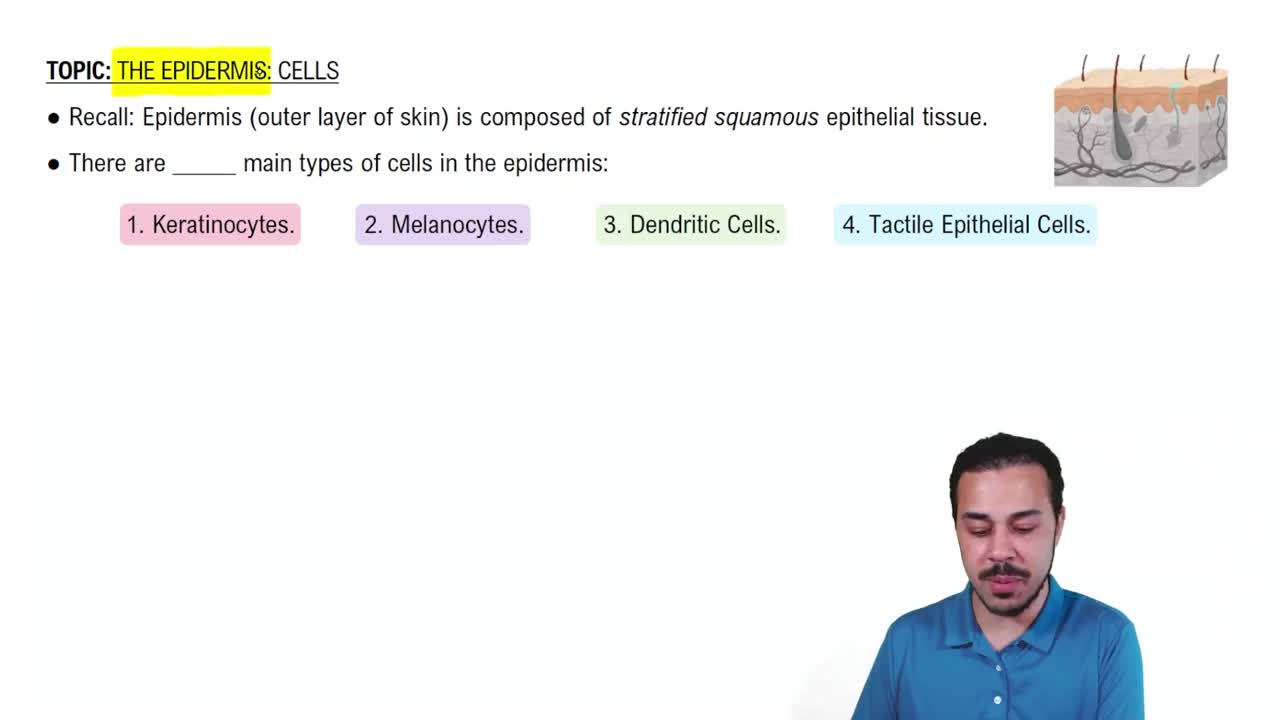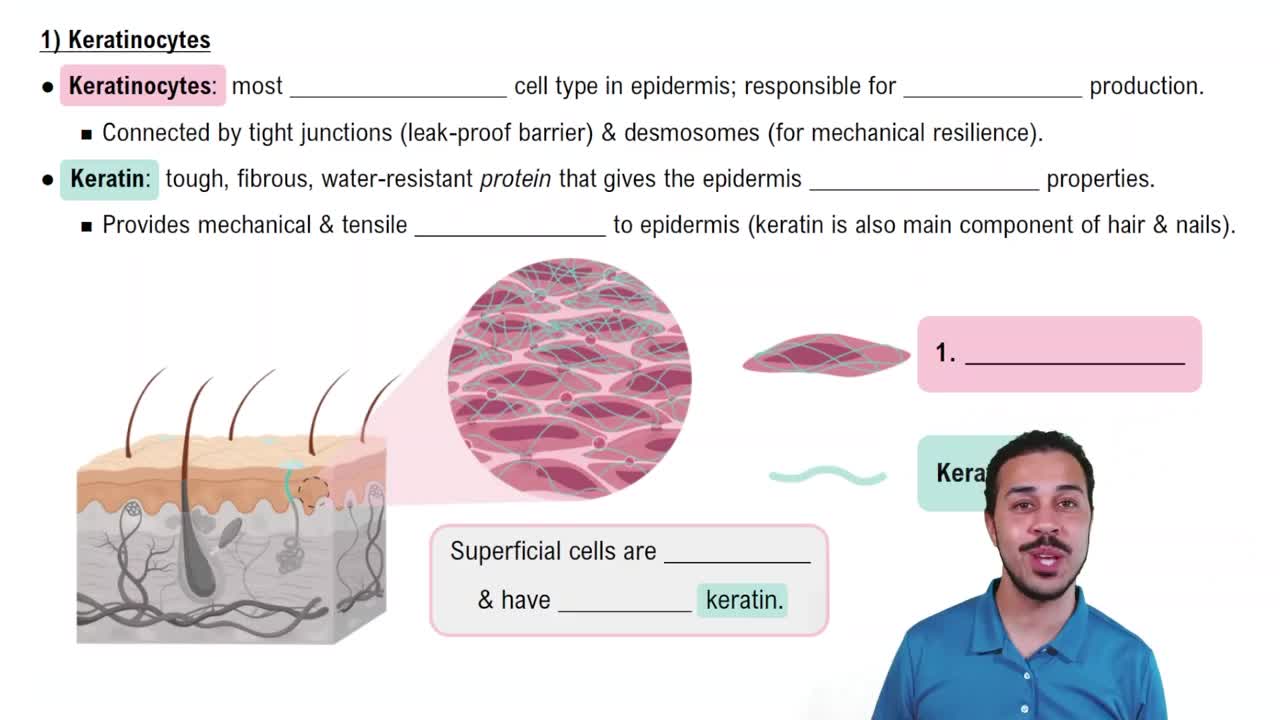The Epidermis: Cells definitions Flashcards
 Back
BackThe Epidermis: Cells definitions
1/15
Terms in this set (15)
- EpidermisThe outermost layer of skin, composed of stratified squamous epithelial tissue.
- KeratinocytesThe most abundant cells in the epidermis, responsible for producing keratin.
- MelanocytesCells in the stratum basale that produce melanin, protecting skin from UV damage.
- Dendritic cellsImmune cells in the epidermis, specifically Langerhans cells, initiating immune responses.
- Tactile epithelial cellsAlso known as Merkel cells, these detect touch and are found in the deepest epidermal layer.
- KeratinA tough, fibrous protein produced by keratinocytes, providing mechanical strength to the epidermis.
- MelaninA pigment produced by melanocytes that protects skin from UV light and contributes to pigmentation.
- Stratum basaleThe deepest layer of the epidermis where melanocytes and Merkel cells are located.
- Langerhans cellsA type of dendritic cell in the epidermis that helps initiate immune responses.
- Merkel cellsSpecialized cells in the epidermis that work with nerves to detect touch.
- Integumentary systemThe system comprising the skin and its accessory structures, including hair and nails.
- Stratified squamous epithelial tissueA type of tissue composed of multiple layers of flat cells, forming the epidermis.
- DesmosomesStructures that hold keratinocytes together, providing mechanical resilience to the epidermis.
- Tight junctionsConnections between keratinocytes that create a leak-proof barrier in the epidermis.
- UV damageHarm caused by ultraviolet light, against which melanin provides protection.



